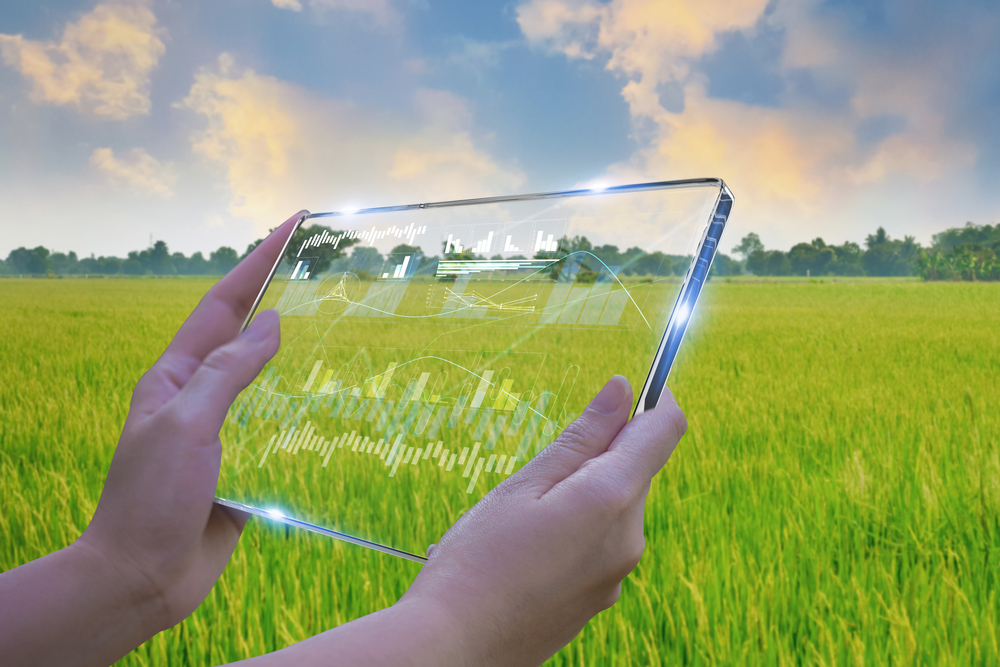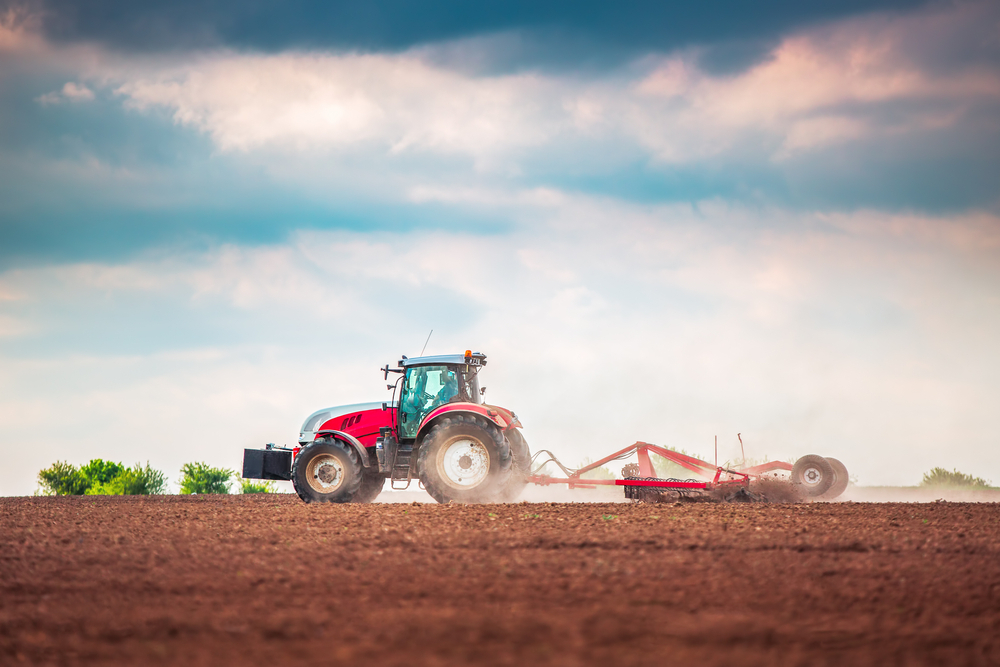Agriculture
ICT in Agriculture & Digital Farming
Information and Communication Technologies (ICTs)
ICTs in agriculture comprise networks, mobiles, devices and applications that aid the processing of data or knowledge with a target audience. They include a broad range of converging technologies, including traditional telecommunications and television, radio and video. But also newer forms such as computers—and the internet which uses both. ICT is used to transmit data from one place to another.
Farmers are using technology to improve the way their crops and livestock are managed.
When addressing the topic of modern farming technology, one must acknowledge the role that information and communication technologies play in providing decision support for farmers.ICT has made it possible, through the use of apps and websites, to stay connected with other farmers. This is useful because they can share information such as knowledge about improved crop quality and production methods. Information technology has had a transformative effect on the way people, governments and businesses function in today’s society.
It is estimated that between 50 and 60 percent of the globe’s population has access to the internet, with mobile phones being used more widely than any other type of device.ICTs have made it possible for people who previously lacked access to services and information to better communicate with one another.
Since the introduction of advanced agriculture technologies, global agriculture has boomed and transformed how producers cultivate crops and distribute goods.
Indian agriculture has benefited from the adoption of innovative ways to improve existing information and communication processes by adopting technological advances. It has revolutionized small-scale farming in several agrarian economies, addressing challenges faced by traditional agriculture.
Understanding How High-Tech Equipment and Technology Are Used in Farming
Agricultural technologies are currently in a period of rapid growth, with the integration of sophisticated devices such as temperature and moisture sensors; drones and computer vision. Digital farming technology helps rural farmers by giving them access to better production strategies and banking services.

Empowering Smallholder Agriculture
In developing countries, farmers use ICT to get important information about planting, crop protection and soil fertility—all of which help them grow better crops. Weather-related advisories and alerts help them prepare for sporadic events such as floods, drought or pest outbreaks—allowing time to flourish in their crops rather than suffer significant losses.
ICTs also provide farmers with reliable information about the best market prices and other news related to their crops so they can obtain a fair price for their produce. The increasing popularity of cheap mobile phones and the internet has made it easier for people living in remote areas to access information about farming. Thanks to inexpensive mobile devices, people who previously lacked access to information and services that would enable informed decision-making are now able to obtain them.
Due to the use of innovative technology in agriculture, farmers can stay connected with other growers and agronomists around the world by simply touching a few buttons on their computers. The advantage of adopting information and communication technologies (ICT) in agriculture is that it enables policymakers, who often have to make decisions based on limited or outdated knowledge about conditions at ground level that will contribute to the designing and implementation of policies that benefit farmers. The ICT’s extensive reach to even the remotest location, combined with its ability to address issues concerning gender bias and women empowerment, can help them overcome socio economic hardships.
ICT APPLICATIONS IN THE DEVELOPED WORLD

In developing countries, farmers use ICT to get important information about planting, crop protection and soil fertility—all of which help them grow better crops. Weather-related advisories and alerts help them prepare for sporadic events such as floods, drought or pest outbreaks—allowing time to flourish in their crops rather than suffer significant losses.
ICTs also provide farmers with reliable information about the best market prices and other news related to their crops so they can obtain a fair price for their produce. The increasing popularity of cheap mobile phones and the internet has made it easier for people living in remote areas to access information about farming. Thanks to inexpensive mobile devices, people who previously lacked access to information and services that would enable informed decision-making are now able to obtain them.
Due to the use of innovative technology in agriculture, farmers can stay connected with other growers and agronomists around the world by simply touching a few buttons on their computers. The advantage of adopting information and communication technologies (ICT) in agriculture is that it enables policymakers, who often have to make decisions based on limited or outdated knowledge about conditions at ground level that will contribute to the designing and implementation of policies that benefit farmers. The ICT’s extensive reach to even the remotest location, combined with its ability to address issues concerning gender bias and women empowerment, can help them overcome socio economic hardships.
ICT APPLICATIONS IN THE DEVELOPED WORLD
The use of ICT in modern agriculture technology has dramatically changed the way farm work is done—for better or worse (or both!)
IoT, Cloud Computing, and Big Data have all dramatically improved current processes. Farmers increasingly use sensing technologies, drones, and other devices to gather vital data about soil properties, air quality, crop health—and even weather conditions.
Farmers and agribusinesses use the data collected by sensors to monitor crop cultivation, optimize the use of agrochemicals and natural resources, and adapt quickly to changing environmental conditions. The use of precision farming and information technology has made agriculture more efficient and less costly. The Green Revolution has delivered decision-making tools that have improved agricultural productivity and managed natural resources more effectively. IoT has applications in agriculture that include monitoring soil, plant, and animal health with sensors installed in the field; tracking products along their supply chains to determine where they come from or what conditions they have been exposed to; and storing data about climate change.
By 2030, the Internet of Things could potentially evolve into an “Internet of Action” where sensors and machines will be able to identify problems and respond by taking action—all without human intervention.
The role of information and communications technology in modernizing agricultural technology.
The use of multimedia technology and other innovative approaches to knowledge transfer processes is revolutionizing agricultural extension services. ICT has helped farmers become more knowledgeable and skilled, allowing them to achieve their goals.

ICT is playing an increasingly important role in several areas of agriculture:
Regulatory policy is administered by government agencies.
Farmers use digital technologies to generate enormous quantities of data that can be used to make better policies and monitor farming conditions.
Extension and advisory services in agriculture
ICT-based media bridges the gap between farmers and researchers, keeping the former informed about innovations in agriculture. Investing in training for smallholders are a more cost-efficient way to make sure that they are knowledgeable about current agricultural practices and markets.
Enhanced market access
ICT-enabled market information services help farmers know which markets have the best prices for their produce and enable them to keep abreast of changes in consumer demand. Agricultural input suppliers and product marketers benefit from the facilitation of networking among stakeholders; this results in increased market access.
Environmentally sustainable agriculture
Low-cost mobile phones, internet access and other communication services to disseminate information; as well as improved climate-smart solutions for rural farmers.
Disaster management early warning system (DMEWS)
ICTs can provide governments and communities with real-time information about disaster prevention and management.
They make it easier to respond in emergencies, and they provide guidance on how to mitigate risk.
Food safety & traceability
Combining simple and sophisticated technologies—such as mobile phones, software solutions, radio frequency identification (RFID) tags, data input websites and sensors using global positioning system (GPS) technology—producers can capture reliable data about the products they produce
Financial inclusion and risk assessment
ICTs provide farmers with increased access to financial and insurance services, empowering them with knowledge about the tools available for risk management.
Capacity building and empowerment
ICTs can contribute significantly to the development of local communities by providing access to social networks and information that empowers people.
Women, youth and other beneficiaries of development projects are given new opportunities.